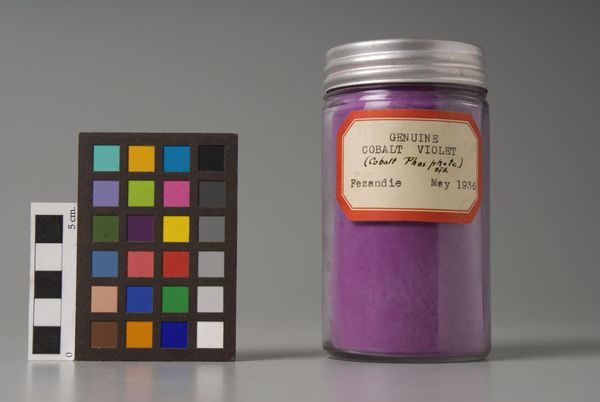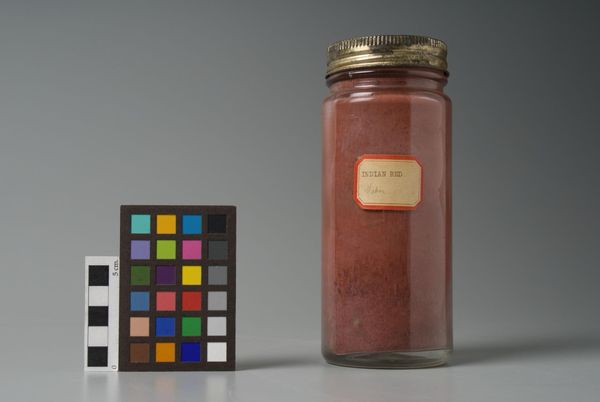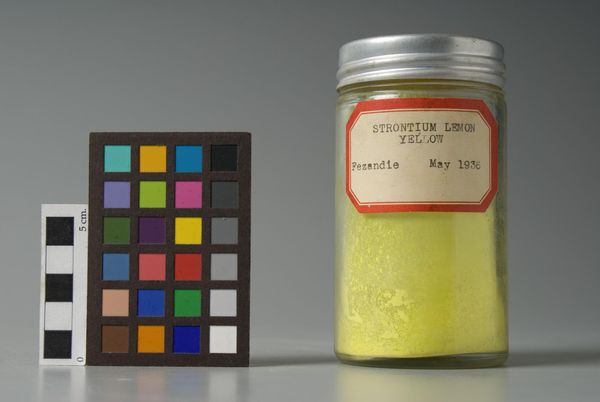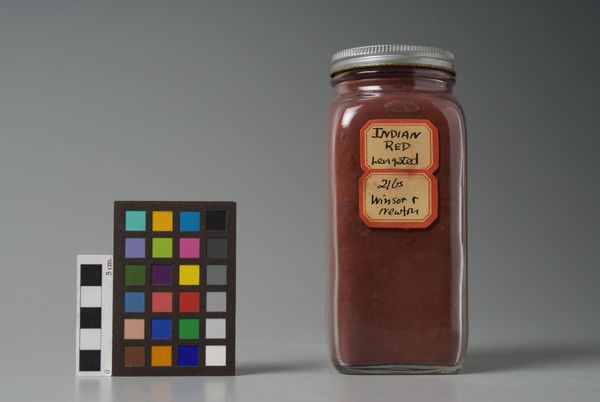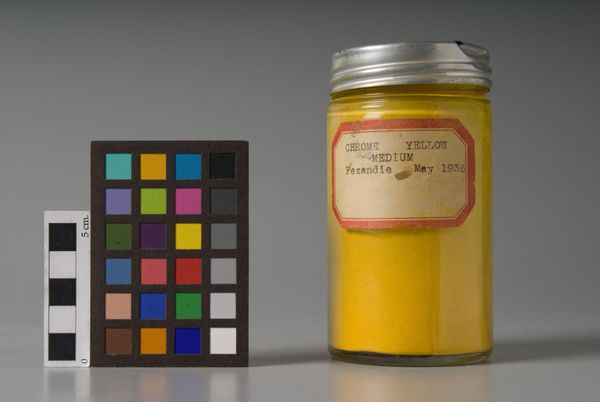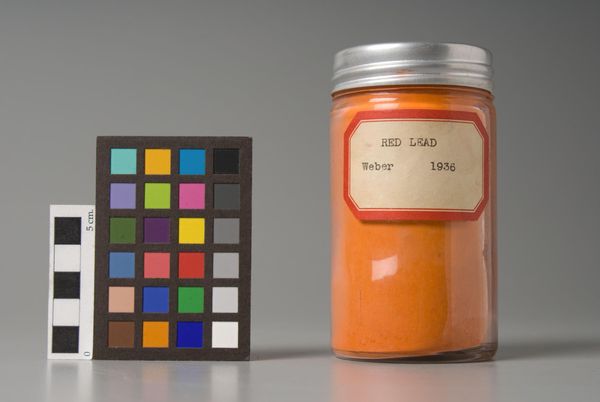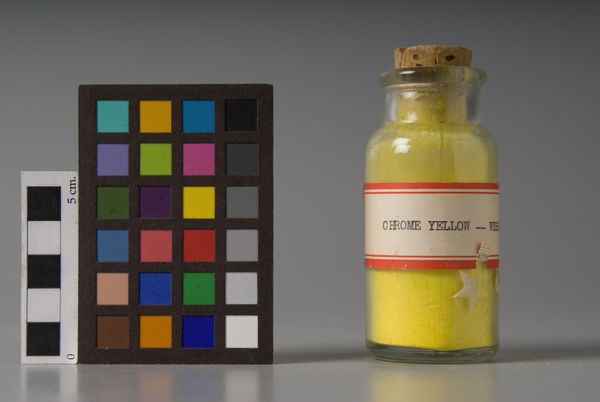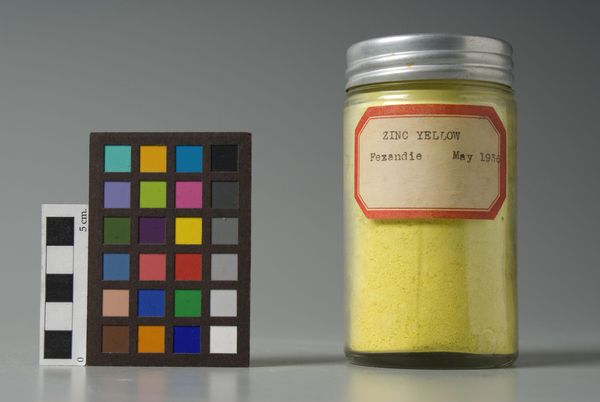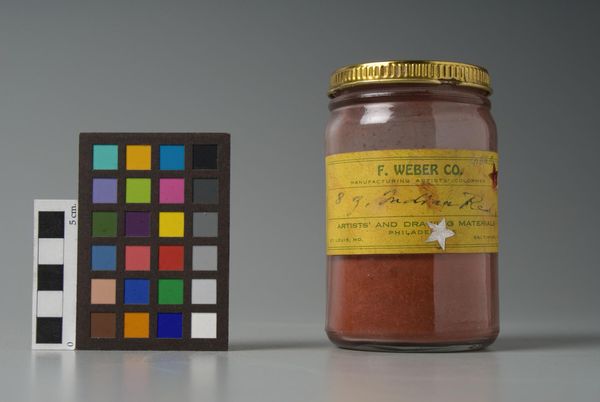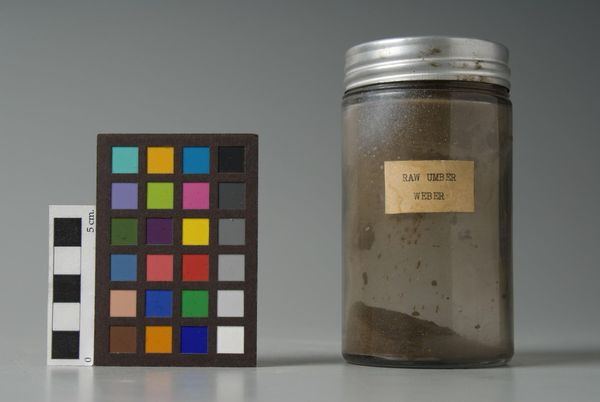
Copyright: CC0 1.0
Curator: Here we have "Manganese Violet," produced by Fezandie & Sperrle, likely in May 1936. It’s simply a jar of pigment, a fundamental element of artistic creation. Editor: It's strangely beautiful. Seeing the raw material like this…it makes me think about accessibility and industrialization of art. Curator: Exactly. Fezandie & Sperrle played a crucial role in supplying artists. How did their industrial practices shape artistic production at the time? Editor: The label gives it a tangible, historical presence. And the jar itself becomes a little time capsule reflecting early 20th-century manufacturing processes. Curator: And look at its placement beside the color checker. It underscores the scientific aspect of art making, color being something measurable and reproducible. Editor: It's a reminder that even the most ethereal artworks begin with raw materials, processed and distributed within specific economic systems. Curator: Truly, seeing this pigment invites us to consider the material base of art history. Editor: Yes, it reframes how we consider both the artist and the systems that made their work possible.
Comments
No comments
Be the first to comment and join the conversation on the ultimate creative platform.
